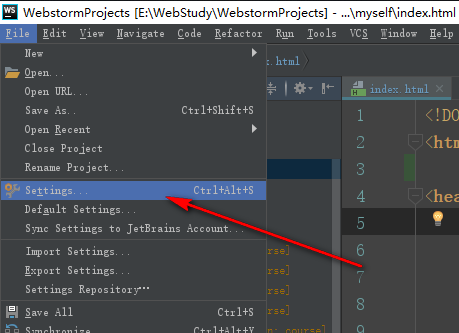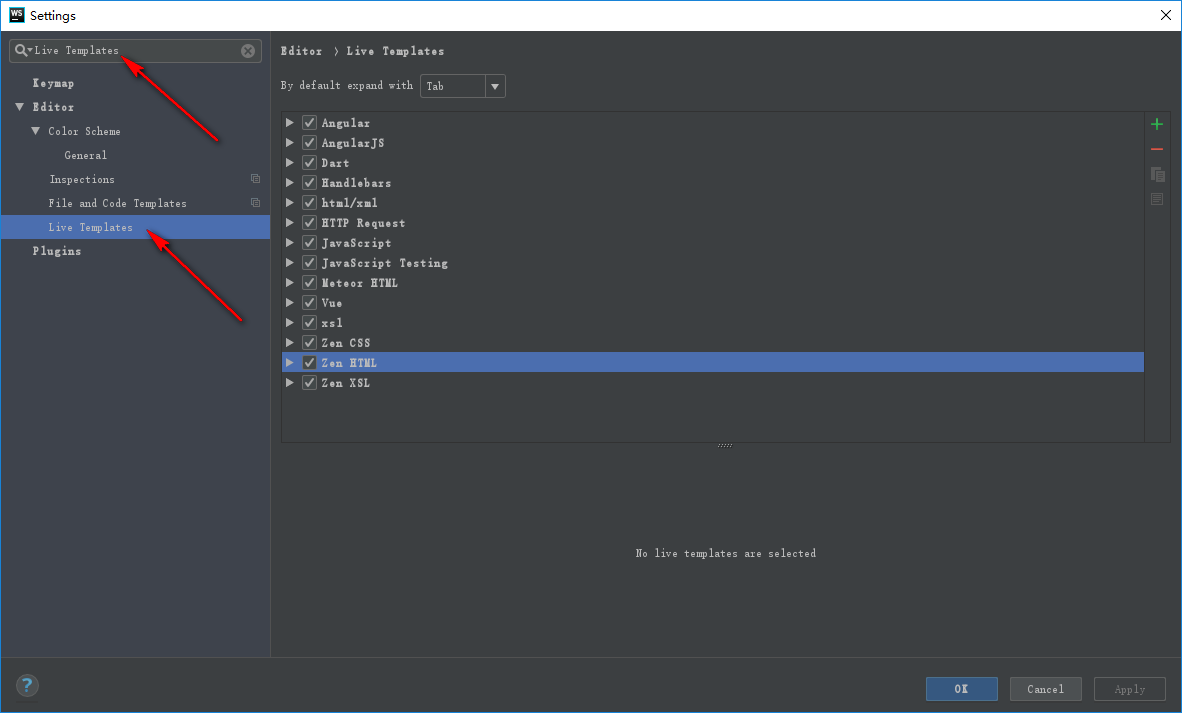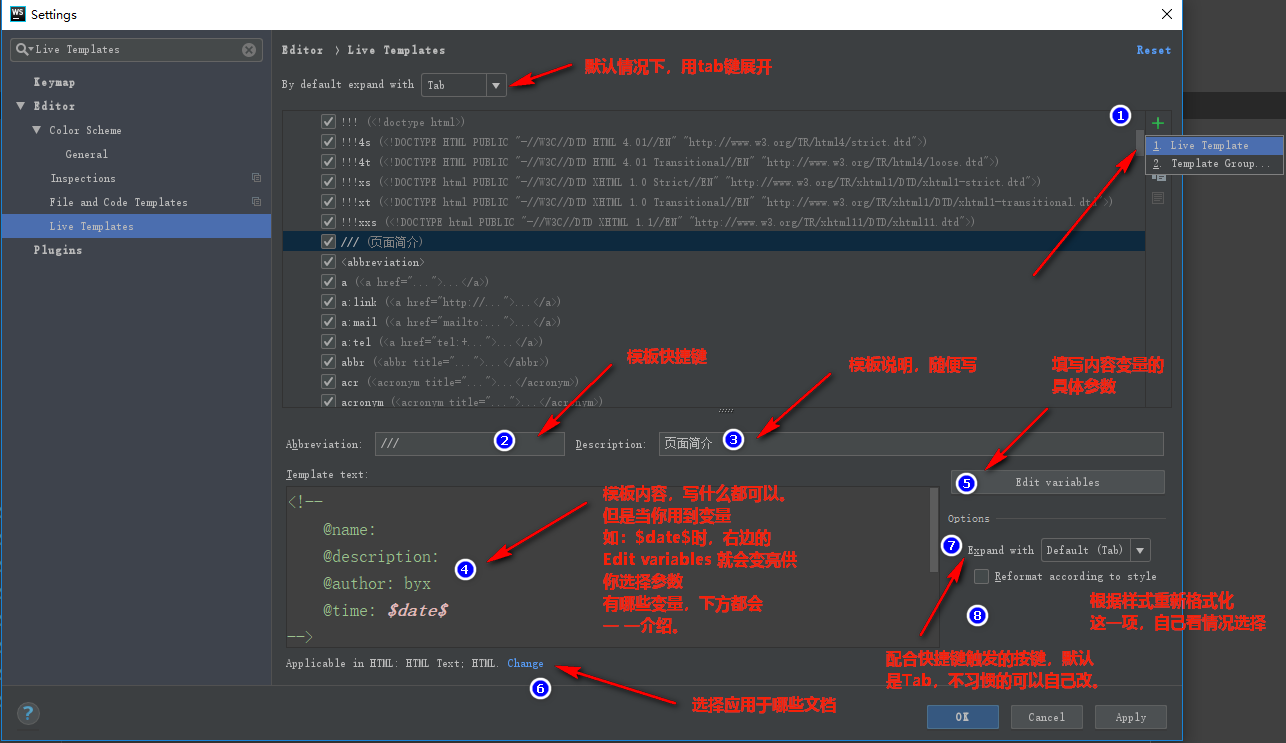前提:
用WebStrom不管写HTML,还是JavaScript都会涉及到一些文档说明。尤其是文档的头部注解说明。
只要是你写的页面,头部注解说明基本一致。每次都写一遍?这不像是一个玩计算机人的风格。
下面的方法。就解决了此问题。
同时提示:养成良好的代码习惯,规范化代码,规范的注释便于后续维护。
实现效果 如下:

文档说明注释 :
Webstorm 中,自定义说明注释模板,模板内容包括(文档描述、作者、创建日期等信息):
自定义注释模板开始:
一、在菜单栏 --->文档中 ---> 找到 设置。

或者直接 快捷键 Ctrl + Alt + S 打开Webstorm设置,找不到的 可以 直接搜索 ‘Live Template’,然后选择进入到右侧菜单,如下:

二、点击右上角 “+” --> Live Template,添加注释模板,出现以下界面,填写相关的信息。参考如下:
<!-- @name: @description: @author: byx @time: $date$ -->
详细信息图如下:

第五步,“Edit variables” ,这里说一下,时间($date$)的具体格式,这个格式和 java中的还不一样,百度也是一半对,一半错,记录下来。防止下回换电脑再应用到。
date("yyyy-MM-dd HH:mm:ss")

第六步,“Change” 选择模板应用的范围。一般不会的就全选就好了。嘿嘿。我只HTML中用到此快捷键。就只勾选了HTML相关。
选择模板应用范围项 为必选项,不选 会报错。保存不了。

三、在HTML代码中,输入 /// + Tab 键即可 自动生成 自定的 文档头部 注释模板了!!!

番外:最后,详细介绍的一下第五步的 Edit variables 到底有哪些参数可用。如下图:(图片来源于网络,byx收集记录)
|
Item |
Description |
|---|---|
|
|
Returns the characters that indicate the end of a block comment in the current language context.返回指示当前语言上下文中块注释结尾的字符。 |
|
|
Returns the characters that indicate the start of a block comment in the current language context.返回指示当前语言上下文中块注释开头的字符。 |
camelCase(String) |
Converts a string into camelCase. For example, 将字符串转换为驼色大小写。例如, camelCase(my-text-file), camelCase(my text file), and camelCase(my_text_file) 这三种都返回 myTextFile. |
capitalize(String) |
Capitalizes the first letter of the parameter. 将参数的第一个字母大写。 |
capitalizeAndUnderscore(sCamelCaseName) |
Capitalizes all the letters of a CamelCase name passed as the parameter, and inserts an underscore between the parts. For example, 将参数所有字母大写,并在各部分之间插入下划线。例如,如 |
classNameComplete() |
This expression substitutes for the class name completion at the variable position. 此表达式在变量位置替换类名完成。 |
clipboard() |
Returns the contents of the system clipboard. 返回系统剪贴板的内容。 |
|
|
Returns the characters that indicate the end of a comment in the current language context. The return value is empty if line comments are defined in the current language. 返回指示当前语言上下文中注释结尾的字符。如果行注释是用当前语言定义的,则返回值为空。 |
|
|
Returns the characters that indicate the start of a comment in the current language context. If line comments are defined in the current language, their start indicator is preferable. 返回指示当前语言上下文中注释开头的字符。如果行注释是用当前语言定义的,则它们的开始指示符更可取。 |
complete() |
Invokes code completion at the position of the variable. 在变量的位置自动识别代码 |
completeSmart() |
Invokes smart type completion at the position of the variable. 在变量的位置调用智能类型完成。 |
|
|
Returns a concatenation of all the strings passed to the function as parameters. 返回串联的所有参数 |
|
|
Returns the name of a variable that can be iterated. 返回可迭代的变量的名称。 |
|
|
Returns a list of elements of an array. 返回数组元素的列表。 |
|
|
Returns a suggested name for an index variable from most commonly used ones: 返回最常用的索引变量的建议名称:i、j、k等。当前作用域中尚未使用的名称将首先显示。 |
|
|
Returns the suggested name for a variable based on its variable type and initializer expression, according to your code style settings that refer to the variable naming rules. |
date(sDate) |
Returns the current system date in the specified format. Without a parameter, the current date is returned in the default system format. 以指定格式返回当前系统日期。 如果没有参数,则以默认系统格式返回当前日期。 |
decapitalize(sName) |
Replaces the first letter of the parameter with the corresponding lowercase letter. 将参数的第一个字母替换为相应的小写字母。 |
enum(sCompletionString1,sCompletionString2,...) |
Returns a list of comma-separated strings suggested for completion when the template is expanded. 返回在扩展模板时建议完成的逗号分隔字符串列表。 |
escapeString(sEscapeString) |
Escapes the string specified as the parameter. 转义指定为参数的字符串。 |
expectedType() |
Returns the expected type of the expression into which the template expands. Makes sense if the template expands in the right part of an assignment, after 当模板扩展中返回表达式的预期类型,如果模板在分配的正确部分、返回后等进行扩展,则是有意义的。 |
fileName() |
Returns the name of the current file with its extension. 返回当前文件的名称及其扩展名。 |
fileNameWithoutExtension() |
Returns the name of the current file without its extension. 返回不带扩展名的当前文件的名称。 |
firstWord(sFirstWord) |
Returns the first word of the string passed as the parameter. 返回作为参数传递的字符串的第一个字。 |
groovyScript("groovy code", arg1) |
Returns a Groovy script with the specified code. You can use the |
|
|
Returns the name of the current JavaScript array. |
jsClassName() |
Returns the name of the current JavaScript class. 返回当前javascript类的名称。 |
|
|
Returns the type of the current JavaScript component. 返回当前javascript组件的类型。 |
|
|
Based on the name of the module, returns the parameter from 根据模块的名称,返回参数fromdefine([“module”]、function(<parameter_in_question>>))。 |
jsMethodName() |
Returns the name of the current JavaScript method. 返回当前javascript方法的名称。 |
|
|
Returns the complete name of the current JavaScript class. |
|
|
Returns a suggested name for an index variable from most commonly used ones: |
|
|
Returns the suggested name for a variable based on its variable type and initializer expression, according to your code style settings that refer to the variable naming rules. |
|
|
The Boolean parameter determines whether constants are allowed or not in the current context. If no parameter is specified, constants are allowed. When the templates expands, a drop-down list is shown with |
|
|
Suggests the name for import statements of the type |
|
|
Returns the characters that indicate the start of a line comment in the current language context. 返回在当前语言上下文中指示行注释开头的字符。 |
lineNumber() |
Returns the current line number. 返回当前行号。 |
lowercaseAndDash(String) |
Converts a camelCase string into lower case and inserts n-dashes as separators. For example, 字符串转换为小写,并插入n个-作为分隔符,例如 lowercaseAndDash(MyExampleName) returns my-example-name |
|
|
Converts a string into snake_case. For example, 将字符串转换为蛇形命名法。例如,snakecase(foo bar)返回foo_bar。 |
spaceSeparated(String) |
Converts a string into lowercase and inserts spaces as separators. For example, 将字符串转换为小写并插入空格作为分隔符。例如,spaceseparated(foo bar)返回foo bar。 |
substringBefore(String,Delimiter) |
Removes the extension after the specified delimiter and returns only the file name. This is helpful for test file names (for example, 删除指定分隔符后的扩展名,并仅返回文件名。这有助于测试文件名(例如,$filename$,“.”之前的子字符串)返回component test in component test.js。 |
time(sSystemTime) |
Returns the current system time in the specified format. 以指定格式返回当前系统时间。 |
underscoresToCamelCase(String) |
Replaces underscores with camelCase letters in the string passed as the parameter. For example, 替换下划线。例如,underlinestocamelcase(foo_bar)返回foo bar。 |
underscoresToSpaces(sParameterWithUnderscores) |
Replaces underscores with spaces in the string passed as the parameter. For example, 将参数中的下划线替换成空格,如 |
user() |
Returns the name of the current user. 返回当前用户的名称。 |
希望可以帮到你。
by不言谢。